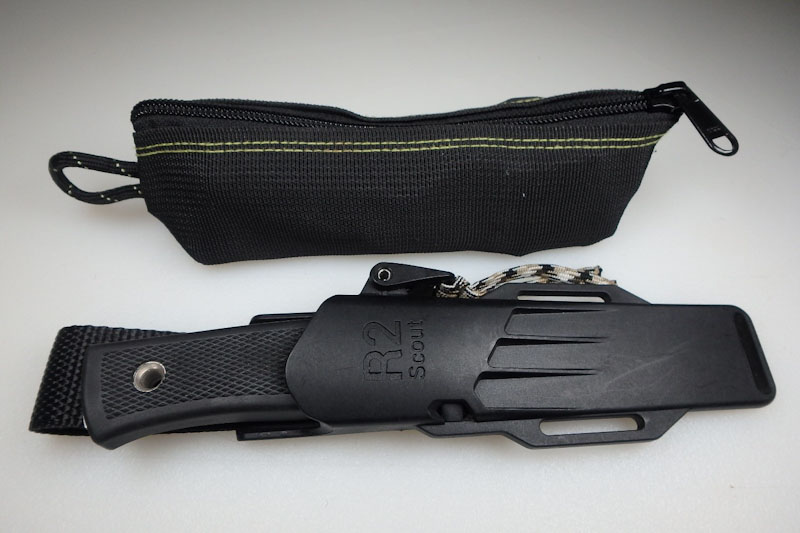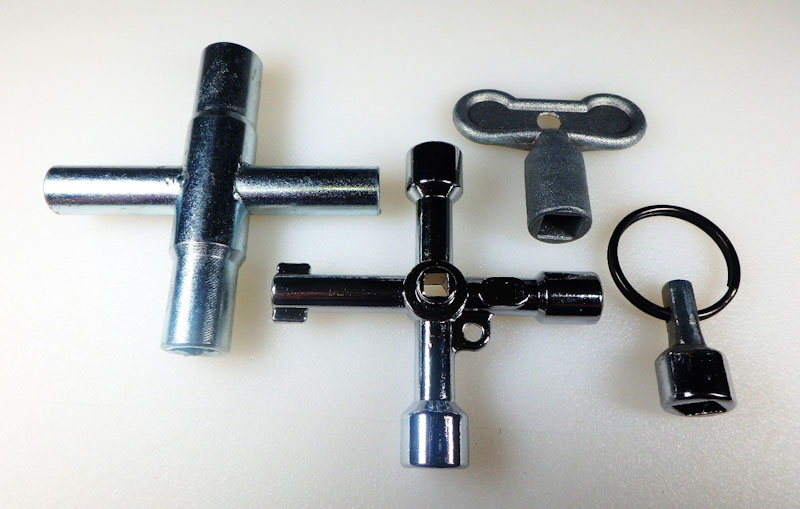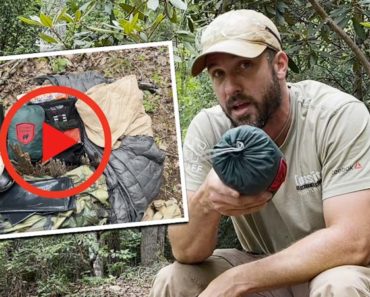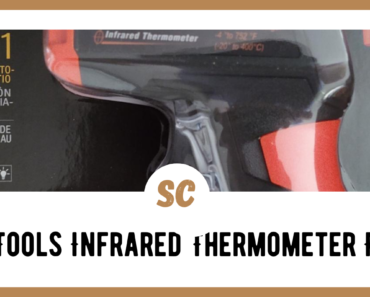Pictured above: SolKoa Grips-S Universal Tool Handles form the core of this survival toolkit.
While man is not the only species that makes and uses tools, it is easy to see why anthropologists initially felt it was what separated man from the other animals. Our ancestors first made tools to solve the problems of survival and we have continued that process to the present day.
Unfortunately, the ingenuity and common sense that drove millennia of toolmaking are being replaced with an addiction to convenience. Today, the only tool some folks know how to use is the credit card. They use it to fix everything. Their car breaks, so they call a tow truck and slap down the card to pay a mechanic to maintain and fix things their parents and grandparent did themselves. Fewer than 2% of Americans grow any of the food they eat. 100% of their food comes from stores and restaurants. They use it to power and heat their homes, to get medical care, water to drink, food to eat, fuel to travel. What happens when the plastic card stops working?
Because if history is a guide, it’s not “if”, it’s “when”. It has happened to many countries already, but thanks to globalization and urbanization, we are now at risk of a global economic collapse. We have never been here before. There is no manual to reboot the world economy. It has never been done on anything close to this scale and with 56% of the world population living in cities. (Bank, 2023) Nobody has ever done it.
How do we prepare for it? We stop reaching for our wallet instead our toolbox. We start growing some of our own food. We learn where we can water. Over time, we use less plastic less and rely more on our problem-solving skills and elbow grease. If you have experienced poverty, you know what I’m talking about because you have had to reach for your toolbox and make do.
So, let’s talk about your survival tool kit. The best survival tools are multiuse. They usually are not the perfect tool for every job but enable the survivor to do many different jobs adequately.
I take a layered, modular approach survival equipment and supplies. Like most other survivalists, I carry a few tools on my person, and more in my Go Bag, which is a bag or satchel that I carry, more still in my vehicle, and more still at fixed sites such as my home and bugout locations. Modules and layers enable me to adapt by lightening my load to improve mobility or adding to it to gain capability and increase sustainment time.


Small Toolkit
I carry a small toolkit in my Go Bag. Seldom a day passes that I do not use one or more tools from it. While this may seem like a long list, most of these tools fit in one small bag the size of a pencil case. I carry even more tools in my PSK, backpack, vehicle, and so on. Most folks carry a multitool, but that usually confines them to the tools that come with the multitool. This kit is based around a set of universal tool handles that can grip most small tools, allowing me to choose which tools I want to carry instead of carrying the tools offered by some multitool manufacturer.
- SolKoa Grips-S Universal Tool Handles – These machined aluminum tool handles are an alternative to multitools. Multitools have their place, but sometimes survivalists need higher quality or specific tools not found in multitools. Grips-S handles can grip flat, round, or hex-shaft tools, and wire saws.
- Craftsman 4-way Flat Screwdriver – A flathead screwdriver is necessary to turn the set screws on the Grips-S tool handles. Although this tool is redundant to the flathead driver bits also included, I like to have a dedicated tool for the tool handles, and it takes up very little space.
- 4” Long, 0.25” Diameter Ferro Rod – This size and length fit perfectly in the universal tool handles, which are more useful than a handle of micarta or even antler more often adorning ferro rods.
- Carbide Ferro Rod Scraper/Knife Sharpener – Used to strike a quality ferro rod, a carbide knife sharpener throws showers of fat sparks.
- Leatherman Bit Extender & Bit Set – Screwdriver and hex bits and star-lux aid in the maintenance and repair of a range of other tool and equipment.
- Standard Bit Extender – Enables the use of standard ¼” hex bit and acts as a handle for quick jobs with the Leatherman bit extender.
- 6” 24TPI Reciprocating Saw Blade, Carbide – A multi-use saw blade for cutting wood, plastic, bone, and metal. If the bottom inch or so of the bade is covered, this saw can be lashed to a pole to reach fruit. If necessary, the gaff hook from the PSK can also be lashed to a pole and used to bend branches down into reach.
- Reciprocating Saw Blade, Diamond Grit – For cutting hardened metals such as lock shackles.
- Hacksaw Blade – For cutting metals.
- Spiral Wire Saw Blade, U.S. Issue – These blades come in packs of two with a set of handles. I attached handles to one and put it in my PSK (carried in my pocket) and use the other with the universal tool handles in my Go Bag. Should one break, I have the other. Any wire saw blade could break under hard use, so try to keep the blade tensioned straight while sawing and bend the branch slightly so that it doesn’t pinch the blade.
- P-51 Can Opener – The old P-38 and P-51 can openers have many uses in addition to opening cans but excel at their intended purpose. If you don’t already have one or more, the models made in the U.S. and Canada are better made than the knockoffs.
- Long Drive Punch, 3/32” – Glock armorer’s tool.
- Long Drive Punch, 0.25” – This size of punch can also be used to drift hinge pins on interior doors so they can then be used as back boards. Several doors can also be used to create a roof for an improvised trench fallout shelter by piling the backfill from the trench over the doors. It might not be the most comfortably spend two weeks after a nuclear attack, but every 3.6” of packed earth on top of the doors gives one halving thickness of protection against the ionizing radiation of the fallout. With five such layers, or just 18” of packed earth, only 1/32 of the radiation would penetrate into the protected area of the shelter. (Kearny, 1979) Doors can also be used to add overhead cover to a fighting position. This size punch is also useful for repriming Bouchon fuzes found in spent riot grenades for use as perimeter alarms, or grenade fuzes, or in boobytraps.
- Carbide Drill Bit, 6mm – Good size to drill a primer pocket in a Bouchon fuze for a #209 shotshell primer and for drilling eyelet holes and rivet holes in sheaths, holsters and pouches, and lanyard holes in wood tool handles.
- Carbide Drill Bit, 3mm – For drilling holes in buttons, toggles, and other small objects.
- Small Screwdriver Bits for Electronics & Eyeglass Repair – Text
- Eyeglass Repair Screws – Any eyeglass repair kit takes up little room and could prevent eyeglass-dependent survivors from facing a survival ordeal blind.
- Mini Jim – For opening live latched doors.
- Widgy Bar – Small pry bar for prying so I am not tempted to use my knife blade as a pry tool.
- Traveler Hook – For opening live latched doors, cleaning crevices, leatherwork.
- Small Flathead Screwdriver Shaft – I noticed I was using this tool a lot, so I pulled off the handle and added it to the pouch.
- Scratch Awl – Punching holes, marking most materials, working on locks, and starting screws, drill bits, etc.
- Hook Tool – Works as a marlinspike, fid or hook when working with cordage.
- Sillcock Key, 5/32”, Modified – For accessing keyed water spigots at rest stops, campgrounds, government buildings, commercial buildings. I noticed that this was the only size I use so I modified a key to fit in my tool pouch.


- Triangular File, Extra Coarse/Coarse – For edge repair, metalwork.
- Knife Sharper, Diamond Grit, Fine – Small Fallkniven diamond grit surface for honing edges.
- Diamond Grit Flat File – For filing hard metals.
- Rotary Tool Cutoff Disc, Diamond – Useful in narrow cuts and in took making and modification. Used to modify standard handcuff keys so they can open many high security handcuffs.
- Sewing Kit
- (2ea.) Sewing, Size 8 and 10 Glover’s, and Darning Needles, Large Eye – Glovers needles have a sharp, triangular point great for sewing leather. Darning needles are blunt tipped needles used with wool yarn to darn holes in wool socks or mend woolen sweaters. A rock is placed in the sock to maintain the proper shape and darning stitch (which is much like weaving) is used to “weave” a rounded patch. A darned patch lays flat and does not cause the material of the sock to pucker, causing blisters. Mending clothing and darning socks used to be common knowledge and every survivalist should learn to sew and repair clothing, packs, and equipment. A large eye is desirable when working with large thread, fishing line used as thread, or thread improvised from sinew or catgut.
- (2) Sail Needle, Size 14 – Sail needs are like oversized sewing needles that are strong enough to sew leather and other tough materials. If you are breaking needles, you probably need to move up to a sail needle or a stitching awl.
- (2) Sewing Awl – Chisel pointed sewing awl with an eye for thread near the point, which makes it easier to sew lockstitches. It can also be used to prick holes in leather so a glover’s needle can pass through it more easily.
- Seam Ripper Shaft – A seam ripper is optional, as even the can opener can be used to rip seams, but the shaft is so small (once it has been removed from the handle) that I carry one in the small plastic tube with PVC endcaps that I use to carry my needles and awls.
- Needle Threader, Steel – Best for needles with large eyes. Is not easily broken and takes up less space than threaders made of wire. You can always bend a diamond into a strand of wire if you have trouble threading a needle with a small eye.
- Mil-Spec Polypropylene Thread – Tough thread for sewing and repairing clothing.
- Darning Yarn – For repairing holes in wool socks.
- Kevlar Thread, 50 Lbs Test, Light Yellow (natural), and 85 Lbs Test Olive Drab – Tough thread for repairing equipment, fletching arrows, making light snares, used as fishing lines, trip wire, and has too many uses to list.
Works Cited
Bank, T. W. (2023, April 3). Urban Development. Retrieved from worldbank.org: https://www.worldbank.org/en/topic/urbandevelopment/overview
Kearny, C. H. (1979). Dangers from Nuclear Weapons: Myths and Facts. In C. H. Kearny, Nuclear War Survival Skills (pp. 6-9). Springfield, VA: US Dept of Commerce.




























